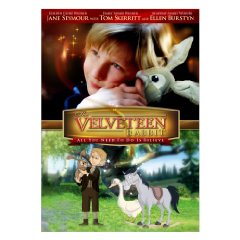Interview: New York Noir
Posted on February 25, 2009 at 2:00 pm
New York Noir is a documentary about the experience and influence of African-Americans in the history and culture of New York City. It will be shown on the Documentary Channel this week and it is available for purchase online. I spoke to director Marino Amoruso and his colleague from Little Dizzy Home Video, Michael Sutton.

After Barack Obama was elected, some people said there was no longer any need to make a special effort to study black history.
Marino Amoruso: It actually has helped to get a better look at black history. Since Obama was elected and even through the campaign, articles in the newspaper compared him to other firsts in African-American history. Even in the sports section they wrote that without Jackie Robinson Obama’s candidacy would not have been possible. There are black firsts in American history that wouldn’t be written about if he had not been running. The good thing about it is that we’re getting exposed to a whole segment of African-American history beyond Martin Luther King Day.
Michael Sutton: A whole other generation will be re-introduced to this history because of this election. Obama’s story is everyone’s story. Growing up, we always saw the picture of the white Jesus hanging next to the white President. He provides a whole new image of life.
I was glad to hear more in your film about a woman who has always fascinated me, Madame C.J. Walker, who is significant in women’s history as well as black history.
MA: Talk about having two strikes against you — the prospects at that time for black women were domestic help. This woman saw a need, fulfilled a need, and also she had an impact on the self-esteem of black women at that time. They were portrayed as ugly but she told them, “You are beautiful; you’re different but beautiful.” She did not just see a need market-wise and fill; she did a lot for them.
MS: She was the first African-American woman millionaire in the United States. Her hair care products care paved the way for African-American companies and items specially designed for those customers. What she did was important because she cared about making products that were good for the hair and skin, not harsh.
Mr. Amoruso, what brought you to this project?
MA: I did a film on the pride and passion of Italians in America, just to say, “Hey look, we’re not all in the mob.” When I was researching that I found out that some of the most prominent black musicians got their start in speakeasies. Gangsters didn’t care what color you were, they were not intending to make a statement about civil rights. They just wanted to get the music. That led me to do a show about the Harlem renaissance, and that led to finding out more about the African-American community in NY. This is almost like the third in a series.
The research is there if you look for it. It is not in every social studies book but you can find it. I have a very large newsreel archive that I have been gathering over the years to make these films, 1200 hours of newsreel footage. I had all the footage of the World War I outfit; I didn’t even realize I had it. Not just in this film but in a lot of stuff I do, across the board, any ethnicities, you’re always finding material that counters stereotypes, the naïveté at different times of people about different ethnic groups. It is even more pronounced in the African-American culture because they had no defense; they could be shot or hung for standing up for themselves. And there is so much people do not know. They think of slavery as being a Southern thing. People will be surprised to know that Broadway was physically broadened by slave labor and there were more slave traders in New York than any other city except for Charleston.
MS: The piece on Malcolm X in our film is very extensive and many people have said it is one of the best depictions they have seen. Malcolm started out militant and angry but came to understand that the country has to live up to the idea it was based on that all men are created equal. He understood that the best way to get good jobs is to get educated and become VP of a company, that’s what Martin Luther King always stood for.
MA: I look at it as American history. It’s all American history. My favorite quote from Martin Luther King was, “We all came over in different boats but we’re all in the same boat now.” We all face stereotypes You can’t shove things down people’s throats, and that’s how King was smart. One step leads to the next.
One of my heroes has always been Jackie Robinson. My grandfather had the racial views of his time but he was a Dodger fan, and he might not have wanted Robinson to marry his daughter but he respected the man. Step 2, my father went farther toward equality and Step 3 — I grew up thinking, “I’m going to be like Jackie Robinson” — I didn’t see a difference, I just wanted to play like him.

